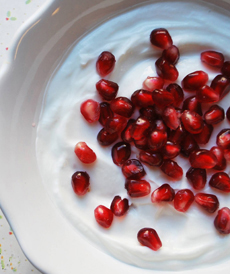TOP PICK OF THE WEEK: Siggi’s Lactose Free Yogurt
|
You can tell that Americans suffer from lactose intolerance by the different types of lactose-free milk in stores. In our supermarket, there are as many varieties of lactose-free milk as conventional cow’s milk (0%, 2%, whole, chocolate, etc.). In fact, Prevention magazine says that 65% of the world population are officially diagnosed as lactose-intolerant. Others among us may be slightly lactose-intolerant but don’t know it. According to Green Valley Creamery, producer of lactose-free products, there are more lactose-intolerant and lactose-sensitive people in America than gluten-free, vegan and vegetarian people combined. That’s an estimated 30-50 million people, 12% of the population. Many members of the lactose-intolerant community just stopped eating dairy altogether. Some switched to non-dairy products made from almond milk, coconut milk, etc. But what if you love cow’s milk? Over the past several years, two companies have stepped up to serve the market for lactose-intolerant people who prefer cow’s milk: In 2004, Icelander Siggi Hilmarsson moved to New York City. He was disappointed that American yogurts lacked the richness of Icelandic yogurt, or skyr (pronounced skeer). With a recipe from his mother, Siggi began to make skyr in his kitchen: a lower-sugar yogurt that uses milk from family farms. When he got it onto the shelves of specialty food stores, it was an immediate hit with yogurt lovers: a luxurious, ultra-premium yogurt experience. Siggi’s yogurt that is even thicker than Greek yogurt. Greek yogurt is triple-strained, but skyr is quadruple-strained. By the way, the more concentrated (strained) a style of yogurt is, the costlier it will be because it contains more milk and less water (one cup of Siggi’s requires four times more milk than a typical American brand). The offset: More milk means more protein. Siggi’s line has since expanded to include yogurts in 0% non-fat yogurt, 2% low-fat yogurt, 4% whole-milk yogurt and 4% no added sugar yogurt. For those who can’t have enough richness, there’s a triple cream yogurt made even richer treat with more added cream—an Icelandic practice. Siggi says that the skyr his dad eats in Iceland may even have more cream than skyr! Siggi’s also makes whole-milk, drinkable filmjölk, a beverage similar to kefir; yogurt tubes for kids; and yogurt cups with pieces of fruits and nuts. Siggi’s new lactose-free yogurts, in Plain and Vanilla, are a whole milk product. As previously noted, in whole milk skyr recipes, that means milk plus a bit of cream. |
|
|
|
A BONUS FOR CHEESE LOVERS A general note about cheese products: As cheeses age, the lactose begins to disappear, broken down by beneficial bacteria in the cheese. Thus, highly-aged cheeses like Parmesan have much less lactose than cream cheese or goat cheese. However, even 1% remaining lactose can be too much for highly-sensitive people. The good news: Two popular cheeses, Cheddar and Jarlsberg, have zero lactose. Lactose, or milk sugar, is naturally found in milk and other dairy products. All animal milk has lactose, but cow’s milk has more than others. When people consume lactose, the body digests it with a stomach enzyme called lactase. If a person’s stomach doesn’t produce enough lactase, the lactose remains undigested in the stomach and causes unpleasant symptoms: bloating, gas, diarrhea. Some people are born without enough lactase to digest milk products. Some produce enough lactase throughout their lives. And others gradually produce less lactase as they grow older. The most lactose-tolerant people are descended from dairying people of northern Europe. Certain other ethnic groups, particularly those that historically have consumed little dairy, tend to be more lactose-intolerant. Some of these groups are people of Arab, East Asian and West African, descent. If you believe you may be lactose intolerant, a physician can give you a simple test. Then, head to the grocer’s and stock up on Siggi’s lactose-free yogurt.
|
||






